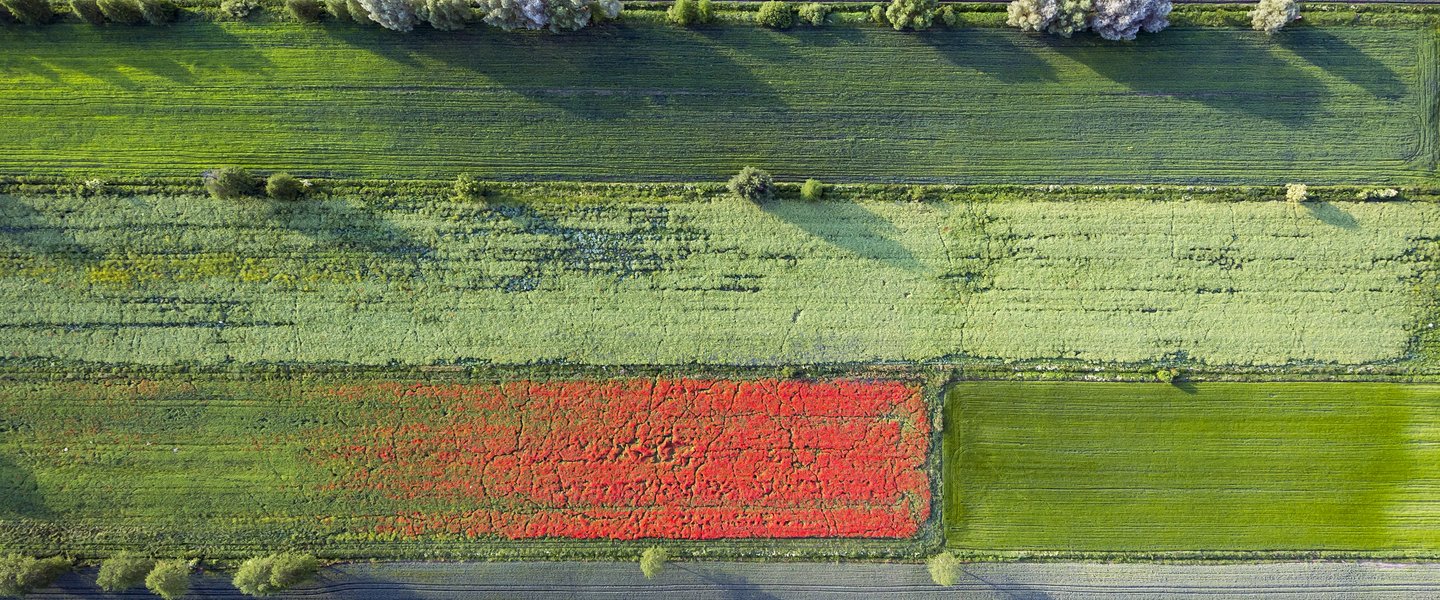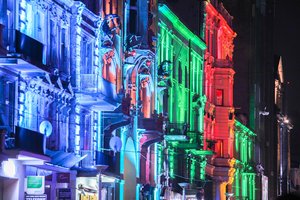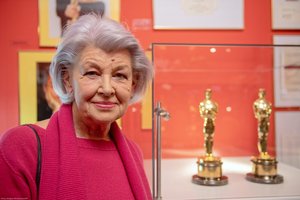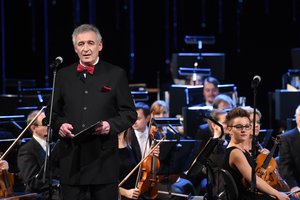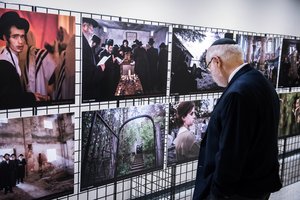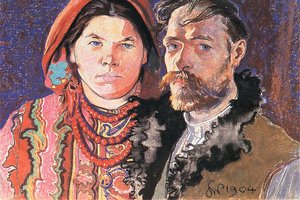Uncharted territory
Kacper Kowalski, a photographer, winner of the World Press Photo 2015 Award for his project Side Effects on how people change and process the landscape of Poland, tells Polska.pl about his aerial pictures which show the undiscovered beauty of Poland and about going with the wind to take a good photo.
Magdalena Majewska, Polska.pl: It is difficult to take a picture while paragliding. What is your technique?
Kacper Kowalski*: When paragliding, sometimes you need to use the brakes and go with the wind. But when the weather is good, I just fly, holding my camera in my hand, and take pictures. I can manage the image, accurately aim, and take a picture. On the other hand, the gyrocopter, i.e. a flying motorbike, is not afraid of the wind and, therefore, never falls, letting me fly in any weather, provided the fog is not too thick and it’s not raining. I can even fly during storms, which is impossible using a paraglider. I can fly and see the Baltic Sea when the wind’s strength reaches 8 on the Beaufort scale. It’s an incredible feeling.
 Your photos are beautiful and symmetrical like tasteful paintings. Do you usually try to take one perfect shot or do you take many pictures and pick the best one later on?
Your photos are beautiful and symmetrical like tasteful paintings. Do you usually try to take one perfect shot or do you take many pictures and pick the best one later on?
If the flight is turbulent and I cannot frame a shot, I take many pictures, but usually none of them are good. I try to take 2–3 shots without reshooting.
What inspires your ideas for photos?
All my photos are actually a variation on one subject, i.e. they portray our civilisation. I studied architecture and I am interested in human activity embedded in the landscape. Sometimes, the changes are apparent, as in the case of mines, construction sites, or industrial areas, but there are also those that are less apparent. For example, when I was flying over a beech forest, I was wondering whether it’s still nature or a wood farm similar to potato fields. A forest does not have to be primeval or natural, sometimes it is the result of human work. You can see it better from above. There are many photographers touring the world and taking fantastic pictures, e.g. Artur Bertrand, the legendary French aerial photographer, the author of Earth from Above, or Edward Burtyński. They portray changes in the landscape in spectacular places. I want to tell the stories of the people changing and processing the Polish landscape. We can talk about a universal problem on a small scale. I always try to show areas in close proximity to the place I live in, i.e. Gdynia and Pomorze, and to look for new faces of human activity there.

What can we see from the bird’s eye view that is hidden to us from where we stand?
My photographs are the answer to your question. People say that everything has already been photographed, and it is difficult to play this archetypical role of a photographer witnessing events or travelling to places inaccessible to others. I have this possibility. I reach distant places, but this distance is understood in vertical terms as I take my pictures 100–150 m above the ground. People are not familiar with this perspective yet, it’s not too popular. In this manner I can fulfil the most basic role of a documentarist. I can show an unknown world, and this motivates me to take my photographs.
I started flying in 1996. For many years after 1989 there was a regulation, communist in its nature, which banned the photographing of, e.g., train stations, airports and public areas from the air. You had to get consent from a competent authority. At that time, Poland was a land which was completely unfamiliar in relation to other countries. There were no mobile phones and no Google Maps, so the exchange of information was much more limited than today. It created an air of mystery. At that time, I was very eager to take pictures while paragliding, because it always let me come back home with attractive loot from an unfamiliar land.
What did you photograph first?
As every pilot, I took aerial photos to show what I could see during the flight. It was easier to take a picture than to describe it. When I learned to pilot well enough to focus on something more than piloting itself, I started taking typical landscape photos. Then I started taking photos for my architectural clients. The first photo was taken for my thesis reviewer; these were pictures of his project being constructed close to a cliff in Orłowo. It was that teacher who told me that the idea was great and it could generate very attractive materials for architects and developers. Naturally, it turned out that the buyers were there. Moreover, due to the location, the bird’s eye view of the Three Cities is very attractive visually: large wooded areas, water and a curved, dynamic landscape. I started taking pictures for the purpose of selling architecture projects, but it quickly overlapped with me documenting the progress of construction works. Those pictures showed how a motorway or a building were coming into being. Then, I took pictures to promote Gdynia and the entire Pomorskie province.
At some point, I realised that after four years of working as an architect, flying had become far more fascinating than designing. Taking photos became an excuse to fly more and I was able to make a living doing it. There was just one obstacle in my head: I was an architect, I had graduated from a university, so how was I supposed to quit this prestigious profession to take photos which, as I thought, could be taken by anyone? My father is an architect, too, and we worked in an office together, so I thought I had to do it. However, when my brother became an architect as well, I felt relieved of the obligation to follow the family tradition. My parents supported me and convinced me to do what I found exciting, so I quit being an architect. Soon it turned out that my architectural approach to the landscape is very attractive. I started submitting photos to competitions and compiling series.
I reach distant places, but this distance is understood in vertical terms as I take my pictures 100–150 m above the ground. People are not familiar with this perspective yet, it’s not too popular. In this manner I can fulfil the most basic role of a documentarist - Kacper Kowalski
Which projects satisfy you the most?
Side Effects is a summary of my work, it presents my way of thinking and viewing the world. The album, published in 2014, is the first album I authored. Side Effects is a journey which starts in pure nature, leads through minor modification, then heavy, human-induced changes, leading us to nature’s reply, i.e. a flood. This album is a visual question about what the natural habitat of humans is. Is it the environment from before people changed it, or the transformed environment that is meant to be easier to live in? Those photographs are mainly taken in Pomorze, but there are also some from other regions of Poland: Bełchatów, Police, surroundings of Szczecin, and Lower Silesia. I am very happy that a small edition of thirty photographs from Effects was acknowledged in World Press Photo 2015 in the new category of long-term projects.
The 2010 flood in Sandomierz was an important event for me as a photographer. I was implementing this project together with Forum Agency. It is not often that you can shoot events from a bird’s eye view, as they usually take place among people or in cities, in small spaces. The flood was my first large event-related subject which made my presence there justified. Typical flood shots show people and animals being evacuated, the construction of levees from sand bags, or aid, i.e. hands passing bread and water and another pair of hands receiving the aid. I tried to shoot places that are symbolic to everyone, regardless of where they live. I showed a flooded church, railway, playgrounds and a cemetery. It turned out that these are those “unshielded” spots in the viewers’ shells through which emotions, which can hurt and which are alive, reach them, as they think: Right, not only are they flooded, but their dead are also being washed away, and I have buried someone recently, so I know what that means. The recipient is emotionally engaged and begins to analyse everything, to experience the emotions and empathise with those people. Today, the job of a photographer is to make the viewers stop and think.
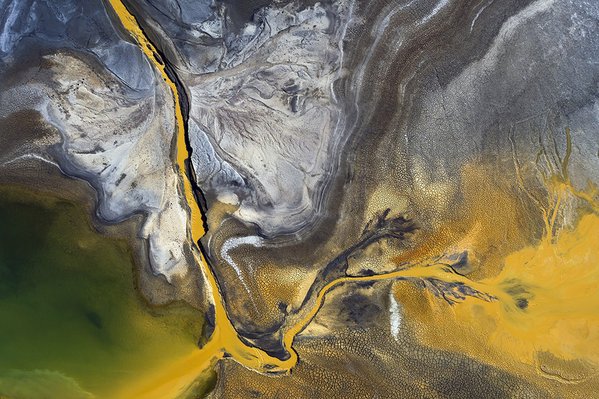
Is Poland beautiful from the bird’s eye view?
It is beautiful and very diverse. We have mountains, lakes, and forests. Maybe there are no spectacular waterfalls, but Poland’s wonder of nature is that the landscape, the flora, and the seasons keep changing. The weather is different virtually every week. Autumn, which starts in September and ends in December, or even later, changes from week to week, too. Trees change, grass gets grey. When I look at a forest right after all the leaves fall, I know it is not fully see-through, because trees still have juice in their branches, but after some time, forests become almost transparent. The same refers to spring or summer. In the summer, crops are green. A bit later, some of them become yellow, and some don’t. In July, some crops are harvested and others are not. In some places, some fields are ploughed, on other fields you can see corn. All this constitutes a great visual treasure. Those constant changes make the landscape attractive. The most difficult month is March, when the snow has melted but nothing is growing yet. Actually, all of March can look very similar. I use such landscape changes in my pictures. I don’t need to go to China or Africa to take spectacular photos, they are all here! Especially for people from other parts of the world. The editors of Time or National Geographic are happy to look at the diversity of the Polish landscape which is presented in my pictures.
The only thing I don’t like in Poland is spatial management. When I see this lack of planning and urban continuity, no spatial order, I feel disturbed. Instead of developing in a structured manner with footpaths connecting estates, common playgrounds and parks, cities suffocate. This is the only thing that hurts me when I look at Poland from above.
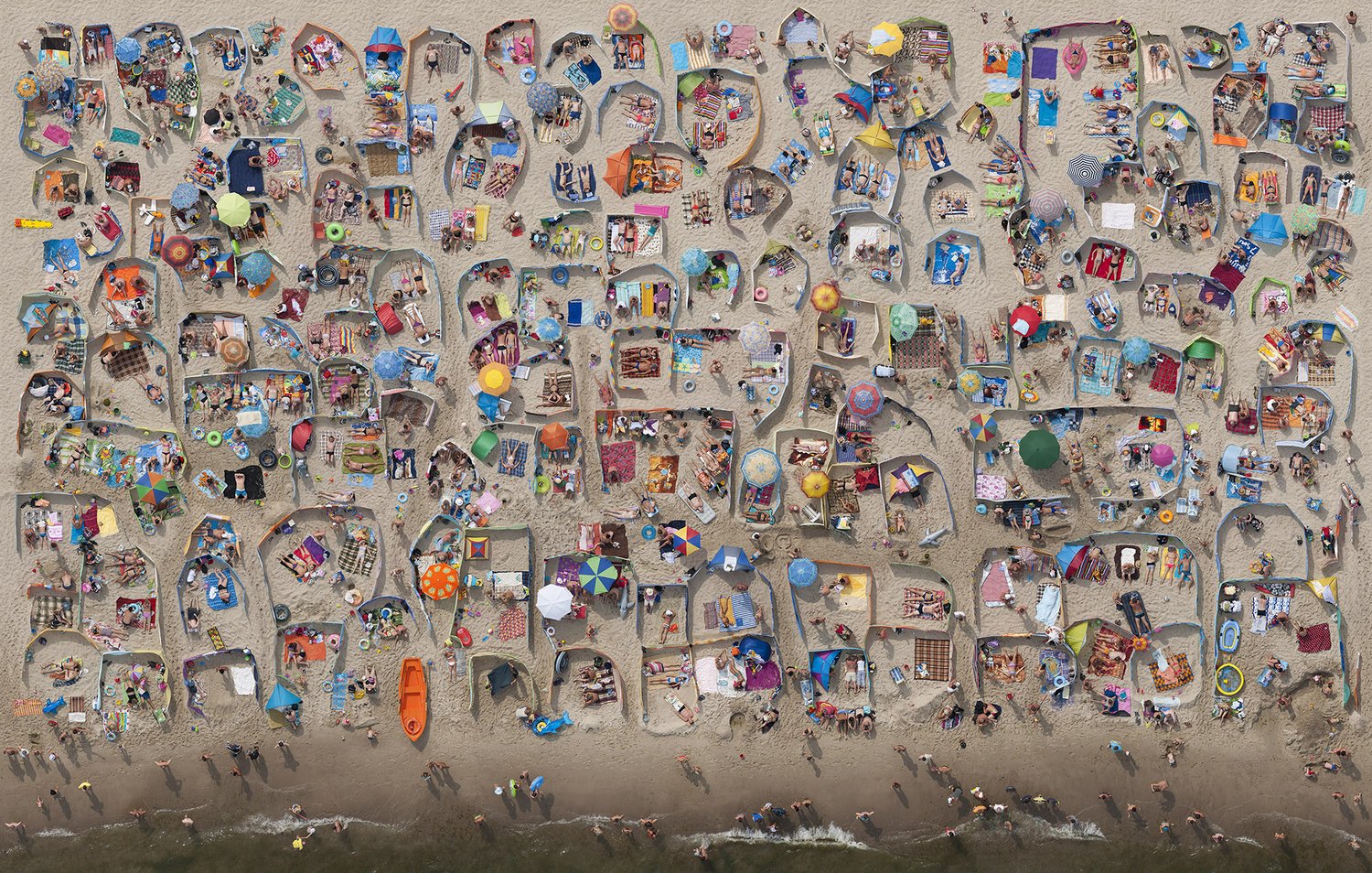
Today, the job of a photographer is to make the viewers stop and think - Kacper Kowalski
Are there any places in Poland you would call your favourite?
I really like the beach in Władysławowo and the sea in the vicinity of Żarnowiec and Gdynia. There are some places which I visit every now and again. The series about a lake and island in the Kashubian forest was created a few years ago. I still go back to look at them... It’s like seeing your old friends. I also go back to the Port of Gdańsk, which keeps changing as well. At present, it is a spectacular construction site.
What are you currently working on?
2015 will be a tough year. I’m planning to go to Salzburg, Vienna, Moscow, Milan, Hong-Kong, Cortina Dampezzo, Gdynia, and New York where the Curators Gallery will open my exhibition on 22 April. I will display photos in the form of two projects. Side Effects, i.e. a documentary series about the relation between people and nature, will be opposite photographs from my creative project called Weaving. This series tells the story of what is happening at the beach, of the identity of a beach and about the codes of behaviour people display while relaxing on beaches (not only in the summer). It is a long-term project. At present, I am just commencing my work. Maybe Weaving will tell me what the Baltic Sea means to me. Living at the seaside makes me similar to the mountain farmer who, when approached by tourists saying Beautiful mountains you have here, replies Beautiful? Rather regular. The sea is a mystery for me. I’m constantly learning about it.
Interviewed by MAGDALENA MAJEWSKA
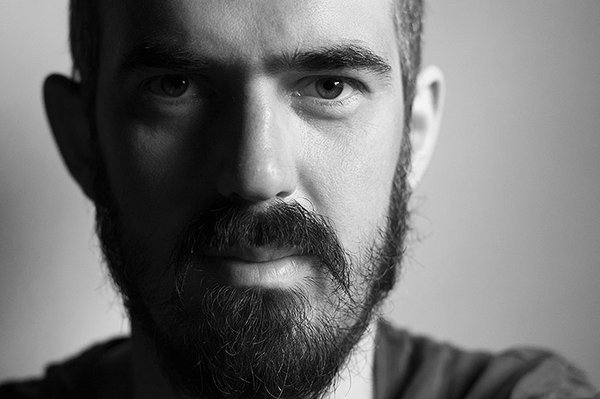
*Kacper Kowalski is a photographer who specialises in aerial photography. He takes pictures from a paraglider or a gyrocopter. He was born in 1977, and went on to study architecture. Kowalski has won numerous prestige awards: World Press Photo in 2009, 2014, and 2015, Picture of the Year International (2012 and 2014) and the National Geographic Award. Kowalski cooperates with the British agency Panos Pictures. In the past, he did competitive paragliding. He was the first Polish person to fly over 200 km without any propulsion.
27.02.2015
